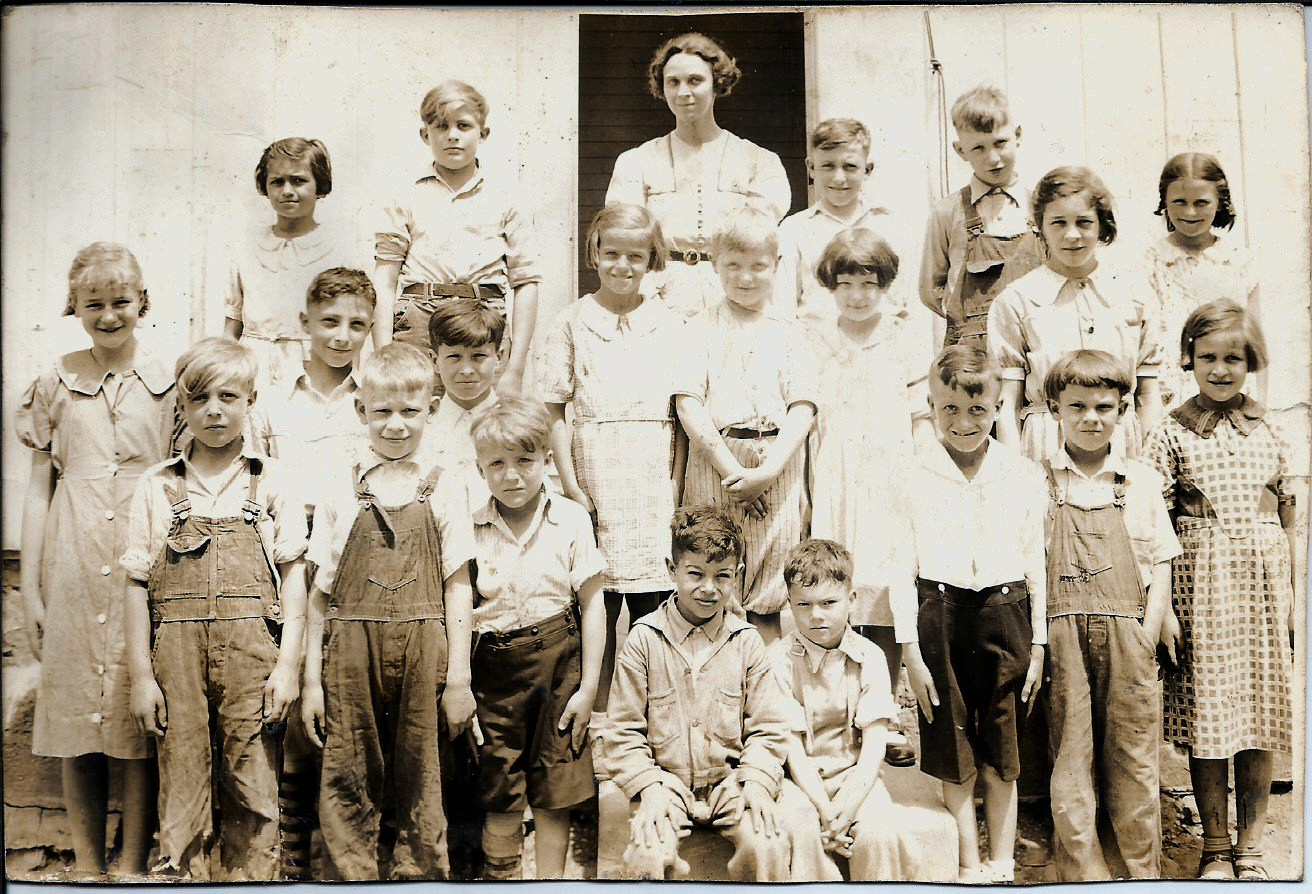by Anita Messina
On a walk through a small woodland off Trumbull Road, Cato Town Historian Eva Sholes and her daughter Amy came upon a large granite boulder, four feet in diameter, lying on the west bank of a slender creek off Trumbull Road and Route 31. Imbedded in the boulder is a 1942 Geodetic Survey marker. A search through survey reports explained the positioning of the benchmark: “72 feet southeast of the schoolhouse.” The women retraced their steps through a butternut grove to more closely examine the skeleton of an old field-stone stonewall, 37 feet long from cornerstone to cornerstone.
At long last, this was the site of the Henry Schoolhouse Eva’s aunts and uncles attended. Little is known about the actual development of the Henry School, named after John Henry, pastor of the Baptist Church in Port Byron. Eva’s great-aunt Marian E. Mills described Henry School in her memoir “The Changing Times of Life on a Farm.” Thanks to Marian, her niece Carrie and nephew Loring, we now have first-person accounts of days spent with primers, stick pens in ink wells and ‘rithmetic books in that one-room schoolhouse.
Marian’s niece Carrie (Mills) Dudley now living in Texas and nephew Loring Mills in Maryland wrote their own memories for Lock 52’s archives.
Carrie writes, “Each school day started with students lined up outside in front of the building, pledging allegiance to the American flag. Two 15-minute recesses were allowed, one mid-morning and one in the afternoon. We all ran outside to play such games as baseball, Anny-Anny-Over, Hopscotch, Follow the Leader and Hide-and-Seek. There were skippers (minnows) in the creek to try to catch.
“Miss Josephine Van Acora was my teacher for most of the years that I went from grade one to grade six in the one room school. She usually walked the mile from her home to school every day. She started the coal fire in the pot-bellied stove on cold days, hung the national flag outside, swept the floor, cleaned the chalkboards and sent one of the older students to a nearby farm to fill the common pail with drinking water. There was no electricity, no lights of any kind, but lots of windows in the building. She taught all six grades, all subjects and turned out her students well prepared to go into junior high school.”
Loring Mills adds, “The Mills family had a long history with the Henry School, which was attended by my father, Stephen Mills, the youngest of eight children, and his seven siblings. My Aunt Marian Mills was a teacher at the school. I went to the Henry school for grades 1-4, starting in 1933 in the first grade when I was four years old. There were only two of us in the same grade with Miss Van Norstrand, Barbara Bailey (nee Mettler) and myself. The next three years my teacher was Miss Josephine Van Acora. The Henry school closed at the end of the 1936-37 school year.”
Along with Marian E. Mills’ memoir Carrie’s and Loring’s schoolhouse memories are preserved and available for study in Lock 52 Historical Society’s genealogy library.
First person accounts provide in-depth information not found elsewhere. The personal perspective is critical to place local history into context. Please consider writing your own personal histories to share with your children and grandchildren. And please feel free to send us a copy!
[After this article appeared in the society’s newsletter, we were contacted by Jo Falsey, who said that she, and Clarisse Martens Coggins (who went to the school), believed that the teacher in the photo was in fact Helen Weston Nostrant.]

One thought on “The Henry School”
I feel sure that the teacher in this picture was my mother, Helen Weston Nostrant. What a wonderful surprise to see her pictured here!
Comments are closed.